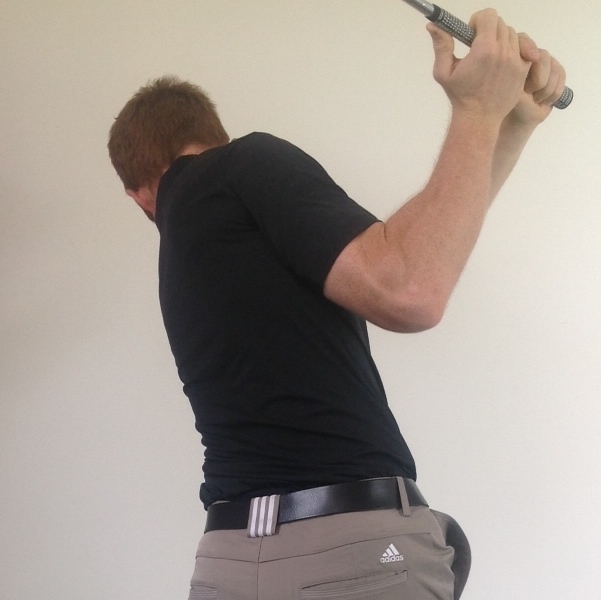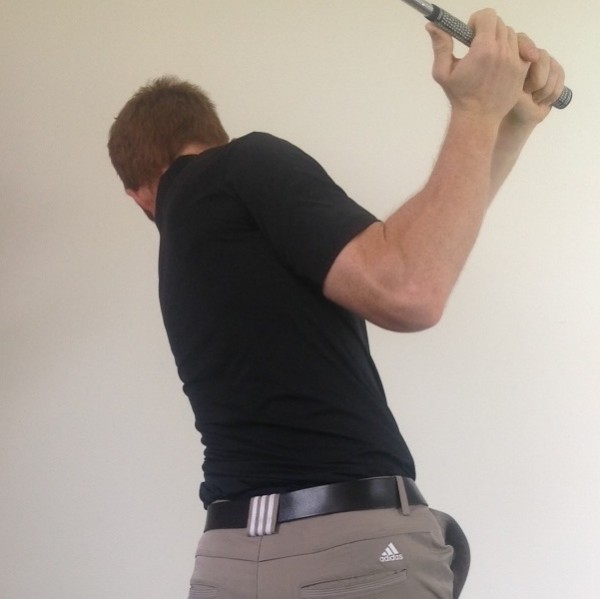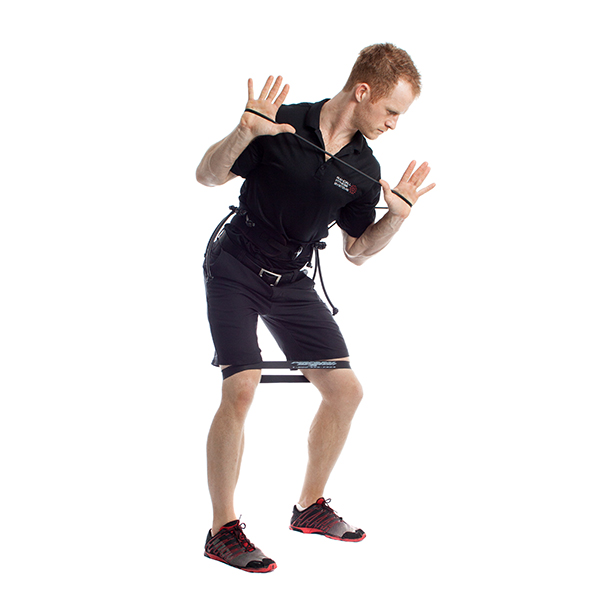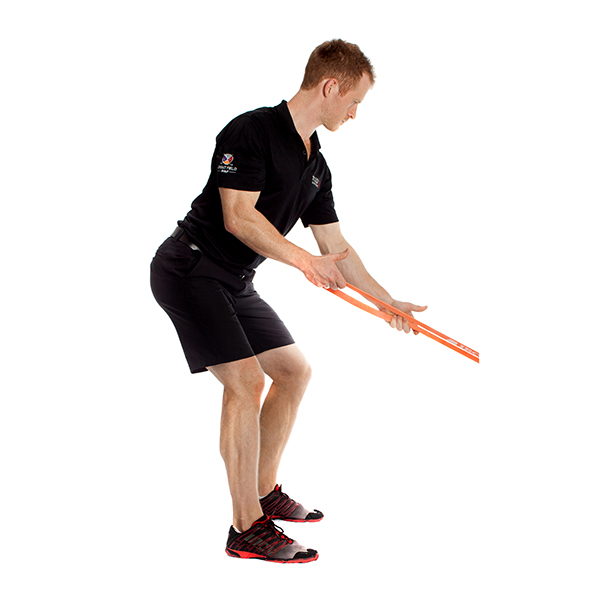Instruction
Three Common Swing Faults: Reverse Spine Angle

In this third and final instalment of my three article series, I am going to look at reverse spine angle.
- Click here to read the first instalment: Hunched Set Up Posture
- Click here to read the second instalment: Early Extension
Regardless of ability, reverse spine angle in the set up and the backswing causes power leaks, inconsistent ball striking and injury. Here’s the good news; it’s really easy to fix with an understanding of basic concepts and few simple exercises.
The Issue: Reverse spine angle
By reverse spine angle, I mean the position that your hips and pelvis get into relative to your upper back and head. The photos above give a good example of reverse spine angle at address and at the top of the backswing. As you can see, the top of the spine is essentially pointing more toward the target than away from it. This means we are going to start by essentially rotating in the wrong direction and getting a lot of weight on to our LEFT side during the backswing.
What this leads to is the upper body moving to the RIGHT in the downswing, essentially “backing up.” This mean there has to be a major adjustment of the body coming back into impact where the right side of the body is shortened in an attempt to get the club back to the ball in a decent position. This is pretty detrimental to the body due to a lot strain going through the lower back and wrists especially. It can also cause inconsistency due to the amount of timing involved trying to manipulate the club back into position with the hands. You will often see a reverse spine angle causing early extension in the downswing.
The Fix: Setup posture drills and dynamic rotation drills
The fix for the setup is to use a mirror and get into good posture (spine angle pointing away from the target) and then cement it using the Ramsay Posture Belt and knee band. Performing the setup posture drills that involve stomping of the feet and pulsing of the arms (rapid muscle activation) will send lots of messages to the brain to activate the key muscles that are involved in holding the correct posture. By increasing brain and body connection using this technique, the new set up posture will ingrain and become natural much more quickly.
Below are a couple of short videos on how to use the knee band and Ramsay Posture Belt and tubing for maximum effect.
[youtube id=”T9PTi4ofmGs” width=”620″ height=”360″]
[youtube id=”0StuDgRdOP8″ width=”620″ height=”360″]
The position at the top of the backswing is often fixed by resolving the issue at set up. However, on occasions players can find their way into reverse spine angle positions even from a solid set up. In this circumstance we use the Ramsay Posture Belt in a more dynamic way.
We set up in good posture and then start to rotate into a good position, again using a mirror for instant visual feedback. When we are able to complete the desired movement, it’s then time to add stomping and pulsing (rapid muscle activation) as well as ramping up the speed of rotation. All of this again develops the mind-body connection and helps the player to weed out the old spine angle and ingrain the new.
Below is a mini program of setup posture drills and strength exercises to help you with your backswing and posterior chain strength.
For many of the exercises, we prescribe we use the Ramsay Posture Belt (above), a great bit of kit that allows us to get into good posture and then make small but very rapid muscle activations and reopen that neural pathway back to the brain. That makes us more aware of those key postural muscles and more likely to use them during setup and swing.
Equipment Needed
- Ramsay Posture Belt: The ultimate tool for training golf posture and movement patterns.
- Knee Band: Can be used around the knee, ankle or foot to activate and strengthen glute muscles.
Note: All products are available to purchase at http://www.randallfitsystems.com/content/products.
Here are some alternatives you might find lying around at home that you can substitute for the recommended products. They are not as effective, but adequate for lower-level exercises.
- For the Ramsay Posture Belt, golfers can substitute a resistance band or theraband tubing.
- For the Spiky Ball, golfers can substitute a tennis ball, cricket ball or golf ball.
- For the knee Band, golfers can substitute a resistance band tied in a loop.
Follow this program is you feel as though you might have some issues with reverse spine angle.
The Program
Perform As a circuit: Three rounds with 20 seconds rest between exercises.
- Set Up Posture Drill (30 seconds).
- Dynamic Turn to Right (45 seconds).
- Resistance Band Hip Sink (8 reps each side).
No. 1: Set Up Posture Drill
Purpose
- Initial stage of exercises for development of postural awareness.
Positioning
- Posture belt, knee band.
- In set up position.
- Hands and arms in front loop.
Form
- Stomp and pulse working through three speeds (33-66-99).
- Maintain posture.
Tips
- Watch head position, retract chin.
- Check form in mirror.
Video
[youtube id=”qdkfUtlhD3I” width=”620″ height=”360″]
No. 2: Dynamic turn to the right
Purpose
- Develop dynamic rotation whilst maintaining posture.
Positioning
- Posture belt and knee band, arms in up position.
Form
- Stomp working through three speeds (33-66-99).
- Make slow controlled rotations to the the right.
- Keep posture and balance throughout the movement.
Tips
- Watch head position, retract chin.
- Check form in mirror.
Video
[youtube id=”eJB_nguKUnM” width=”620″ height=”360″]
No. 3: Resistance Band Hip Sink
Purpose
- Train hip sink motor pattern.
Positioning
- Resistance band or double cable.
- Holding band or cable in neutral grip position.
- Athletic stance.
Form
- Make hip sink movement.
- Keep connection in back and pull the arms in on same side as hip sink.
- Alternate the movement from side to side.
Tips
- Feel glute, back and core ALL working together in the movement.
- LIKE0
- LEGIT0
- WOW1
- LOL0
- IDHT0
- FLOP3
- OB0
- SHANK1
Instruction
Clement: Laid-off or perfect fade? Across-the-line or perfect draw?

Some call the image on the left laid off, but if you are hitting a fade, this could be a perfect backswing for it! Same for across the line for a draw! Stop racking your brain with perceived mistakes and simply match backswing to shot shape!
- LIKE0
- LEGIT0
- WOW0
- LOL0
- IDHT0
- FLOP0
- OB0
- SHANK0
Instruction
The Wedge Guy: The easiest-to-learn golf basic

My golf learning began with this simple fact – if you don’t have a fundamentally sound hold on the golf club, it is practically impossible for your body to execute a fundamentally sound golf swing. I’m still a big believer that the golf swing is much easier to execute if you begin with the proper hold on the club.
As you might imagine, I come into contact with hundreds of golfers of all skill levels. And it is very rare to see a good player with a bad hold on the golf club. There are some exceptions, for sure, but they are very few and very far between, and they typically have beat so many balls with their poor grip that they’ve found a way to work around it.
The reality of biophysics is that the body moves only in certain ways – and the particulars of the way you hold the golf club can totally prevent a sound swing motion that allows the club to release properly through the impact zone. The wonderful thing is that anyone can learn how to put a fundamentally sound hold on the golf club, and you can practice it anywhere your hands are not otherwise engaged, like watching TV or just sitting and relaxing.
Whether you prefer an overlap, interlock or full-finger (not baseball!) grip on the club, the same fundamentals apply. Here are the major grip faults I see most often, in the order of the frequency:
Mis-aligned hands
By this I mean that the palms of the two hands are not parallel to each other. Too many golfers have a weak left hand and strong right, or vice versa. The easiest way to learn how to hold the club with your palms aligned properly is to grip a plain wooden ruler or yardstick. It forces the hands to align properly and shows you how that feels. If you grip and re-grip a yardstick several times, then grip a club, you’ll see that the learning curve is almost immediate.
The position of the grip in the upper/left hand
I also observe many golfers who have the butt of the grip too far into the heel pad of the upper hand (the left hand for right-handed players). It’s amazing how much easier it is to release the club through the ball if even 1/4-1/2″ of the butt is beyond the left heel pad. Try this yourself to see what I mean. Swing the club freely with just your left hand and notice the difference in its release from when you hold it at the end of the grip, versus gripping down even a half inch.
To help you really understand how this works, go to the range and hit shots with your five-iron gripped down a full inch to make the club the same length as your seven-iron. You will probably see an amazing shot shape difference, and likely not see as much distance loss as you would expect.
Too much lower (right) hand on the club
It seems like almost all golfers of 8-10 handicap or higher have the club too far into the palm of the lower hand, because that feels “good” if you are trying to control the path of the clubhead to the ball. But the golf swing is not an effort to hit at the ball – it is a swing of the club. The proper hold on the club has the grip underneath the pad at the base of the fingers. This will likely feel “weak” to you — like you cannot control the club like that. EXACTLY. You should not be trying to control the club with your lower/master hand.
Gripping too tightly
Nearly all golfers hold the club too tightly, which tenses up the forearms and prevents a proper release of the club through impact. In order for the club to move back and through properly, you must feel that the club is controlled by the last three fingers of the upper hand, and the middle two fingers of the lower hand. If you engage your thumbs and forefingers in “holding” the club, the result will almost always be a grip that is too tight. Try this for yourself. Hold the club in your upper hand only, and squeeze firmly with just the last three fingers, with the forefinger and thumb off the club entirely. You have good control, but your forearms are not tense. Then begin to squeeze down with your thumb and forefinger and observe the tensing of the entire forearm. This is the way we are made, so the key to preventing tenseness in the arms is to hold the club very lightly with the “pinchers” — the thumbs and forefingers.
So, those are what I believe are the four fundamentals of a good grip. Anyone can learn them in their home or office very quickly. There is no easier way to improve your ball striking consistency and add distance than giving more attention to the way you hold the golf club.
More from the Wedge Guy
- The Wedge Guy: Golf mastery begins with your wedge game
- The Wedge Guy: Why golf is 20 times harder than brain surgery
- The Wedge Guy: Musings on the golf ball rollback
- LIKE86
- LEGIT13
- WOW6
- LOL1
- IDHT0
- FLOP4
- OB1
- SHANK8
Instruction
Clement: Stop ripping off your swing with this drill!

Not the dreaded headcover under the armpit drill! As if your body is defective and can’t function by itself! Have you seen how incredible the human machine is with all the incredible feats of agility all kinds of athletes are accomplishing? You think your body is so defective (the good Lord is laughing his head off at you) that it needs a headcover tucked under the armpit so you can swing like T-Rex?
- LIKE0
- LEGIT2
- WOW2
- LOL0
- IDHT0
- FLOP0
- OB0
- SHANK2
-

 19th Hole2 weeks ago
19th Hole2 weeks agoDave Portnoy places monstrous outright bet for the 2024 Masters
-

 19th Hole2 weeks ago
19th Hole2 weeks agoTiger Woods arrives at 2024 Masters equipped with a putter that may surprise you
-

 19th Hole2 days ago
19th Hole2 days agoJustin Thomas on the equipment choice of Scottie Scheffler that he thinks is ‘weird’
-

 19th Hole2 days ago
19th Hole2 days ago‘Absolutely crazy’ – Major champ lays into Patrick Cantlay over his decision on final hole of RBC Heritage
-

 19th Hole3 weeks ago
19th Hole3 weeks agoReport: Tiger Woods has ‘eliminated sex’ in preparation for the 2024 Masters
-

 19th Hole1 week ago
19th Hole1 week agoTwo star names reportedly blanked Jon Rahm all week at the Masters
-

 19th Hole1 week ago
19th Hole1 week agoReport: LIV Golf identifies latest star name they hope to sign to breakaway tour
-

 19th Hole1 week ago
19th Hole1 week agoNeal Shipley presser ends in awkward fashion after reporter claims Tiger handed him note on 8th fairway





















cole
Apr 17, 2014 at 12:32 pm
I see a lot of beginners doing this and wondering why they can’t hit the ball.
Nick Buchan
Apr 11, 2014 at 4:06 pm
Nice job Nick! Really like the resistance band hip sink exercise. Great to train a probably far to often overlooked movement pattern for golfers. Would you look at external rotation of the trail shoulder in a player with reverse spine angle at all?
Nick Randall
Apr 11, 2014 at 8:52 pm
Thanks Nick, the hip sink exercise is a favourite of mine. We often talk about disassociation between upper and lower body and rightly so, it’s a very important motor patterns to learn initially. But it’s rare that I see people using a drill to get them working in harmony, which is what we really want in the golf swing.
Regards external rotation of the trail shoulder – this is something I ALWAYS screen for, it’s a very important range of motion to look at. You are right that a reverse spine angle pattern could well be a result of compensating for a lack of external rotation in the trail shoulder. When our body comes up against a physical road block which prevents us from getting into the right position then a compensatory movement is very likely to occur.
This is a great article which explains how shoulder restrictions affect the golf swing;
http://strongergolf.org/2014/02/27/shoulder-mobility-swing-plane/